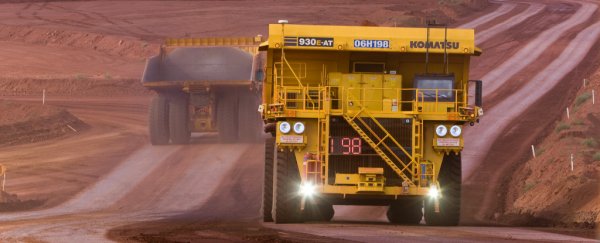Australian mining giant Rio Tinto just completed its rollout of huge driverless trucks to transport iron ore and other material around its Pilbara sites. They can run for 24 hours a day, 365 days a year.
The 7-metre-high trucks are Rio's way of increasing onsite efficiency, cutting costs, and improving safety.
They're controlled by employees in a control centre in Perth, 1,200 km away. The idea is to cut the need for high-risk jobs where employees face rough working conditions in extreme heat and often suffer extreme fatigue.
According to a report in the Financial Times, Rio is already seeing noticeable benefits to the deployment of the driverless trucks which are transporting around 20 million tonnes of iron ore every month and have the potential to save up to 500 working hours per year.
Andrew Harding, the company's iron ore chief executive, said: "Our autonomous fleet outperforms the manned fleet by an average of 12 percent, primarily by eliminating required breaks, absenteeism and shift changes."
Rio Tinto isn't the only company employing autonomous vehicles.
BHP Billiton and Fortescue have also been testing the new technology, but Rio Tinto boasts the most advanced fleet, by far. The company has been rolling out the automated vehicles for the past three years, but completed the rollout this week. There are 69 vehicles in total which make up a fifth of its fleet in Pilbara, the location of one of its major operations.
While the technology will most likely take away jobs traditionally performed by humans, other jobs will be created in areas such as technology development and data analysis, according to Carla Boehl from Curtin University's school of mining.
The introduction of the fleet comes at a difficult time for mining companies. Commodity prices have been on the decline, and in April, it was reported that Rio Tinto was shipping less iron ore than it digs up. The introduction of these technologies is an important way of cutting costs.
This article was originally published by Business Insider.
More from Business Insider:
